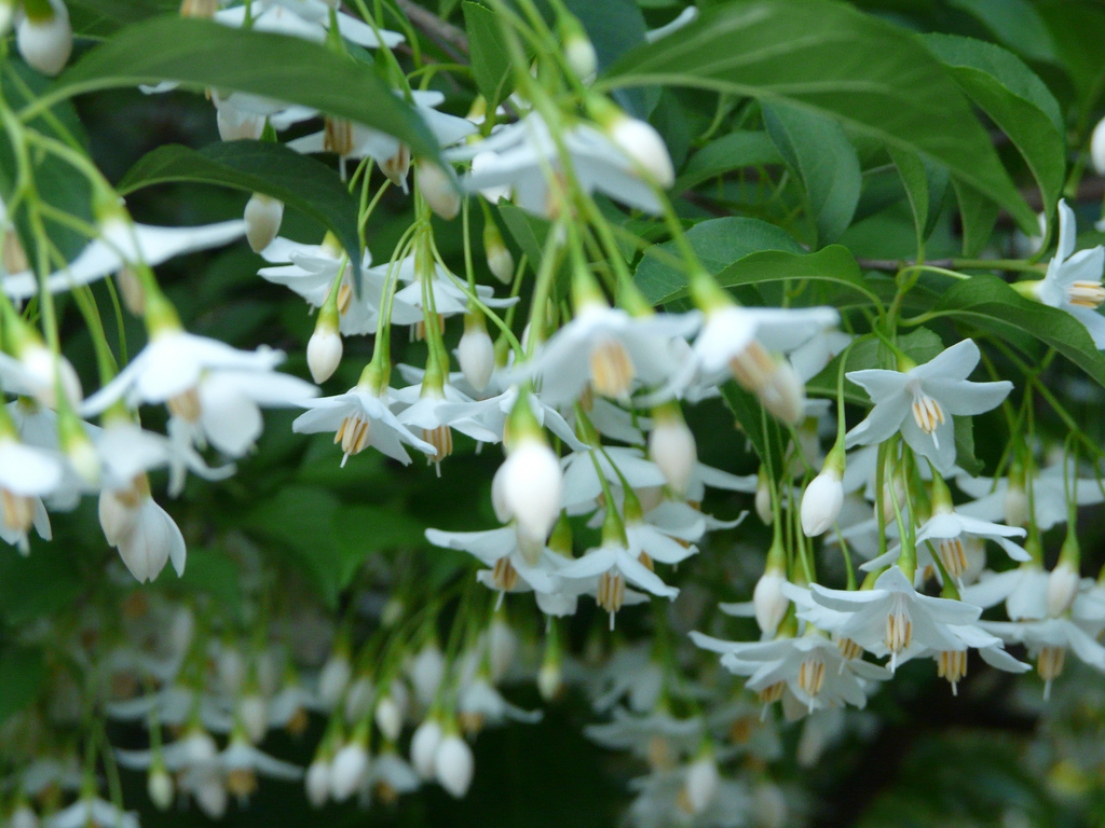The Japanese snowbell tree “Styrax japonicus”, also sometimes called the Japanese snowdrop tree, is hardy in Sunset’s Climate Zones 4 to 9, 14 to 21, 32 to 34 and 39. This graceful native of Japan, China and Korea takes its name from the delicate bell-shaped flowers produced in clusters in springtime. The white blossoms are lightly fragrant. Because the leaves angle upward from the branches and flowers dangle down, the tree takes on the effect of having parallel green and white tiers when in bloom. When young, Japanese snowbell trees tend to have a slender shape, but as specimens reach their mature height of 30 feet, they can take on a spread of 30 feet or more. This tree provides the added benefits of an attractive gray-brown bark and colorful fall foliage. The variety “Pink Chimes” has light pink flowers.
1. Plant a Japanese snowbell in a spot where it is sheltered from strong winds and where it will receive partial to full sun. Don’t site the tree too close to a shrub or another tree that will cramp its growth. Since its branches tend to grow horizontally, the Japanese snowbell needs ample room to spread.
2. Supply the tree with wet or constantly moist soil that is well-drained. It prefers a loamy soil that is highly acidic to slightly alkaline. Amend the soil with peat or other organic material.
3. Keep the tree well-watered, particularly in its first year as it establishes its root system.
4. Feed the Japanese snowbell with a general-purpose fertilizer according to package instructions just before it commences new growth in the spring.
5. Prune to shape the tree’s growth with sharp pruning shears. The best time to do this is in late winter or early spring. Prune lower branches all the way to the trunk on young specimens, if you want the Japanese snowbell to assume a more treelike shape. Otherwise, it will tend to take on the appearance of a very large shrub.
Tip
• You can plant perennials or small shrubs underneath the Japanese snowbell since its roots are nonaggressive.
• Propagate the Japanese snowbell, if desired, by taking softwood cuttings. This tree can also be propagated by seed, but the seed may require two years of dormancy before sprouting.
Warning
• Although it is generally not bothered by pests or disease, a Japanese snowbell tree should be monitored for the ambrosia beetle, which bores into the tree’s wood and destroys vascular tissue. Planting the tree at a woodland’s edge where it can stay cool and moist makes it less vulnerable to attack by these insects.








Recent Comments